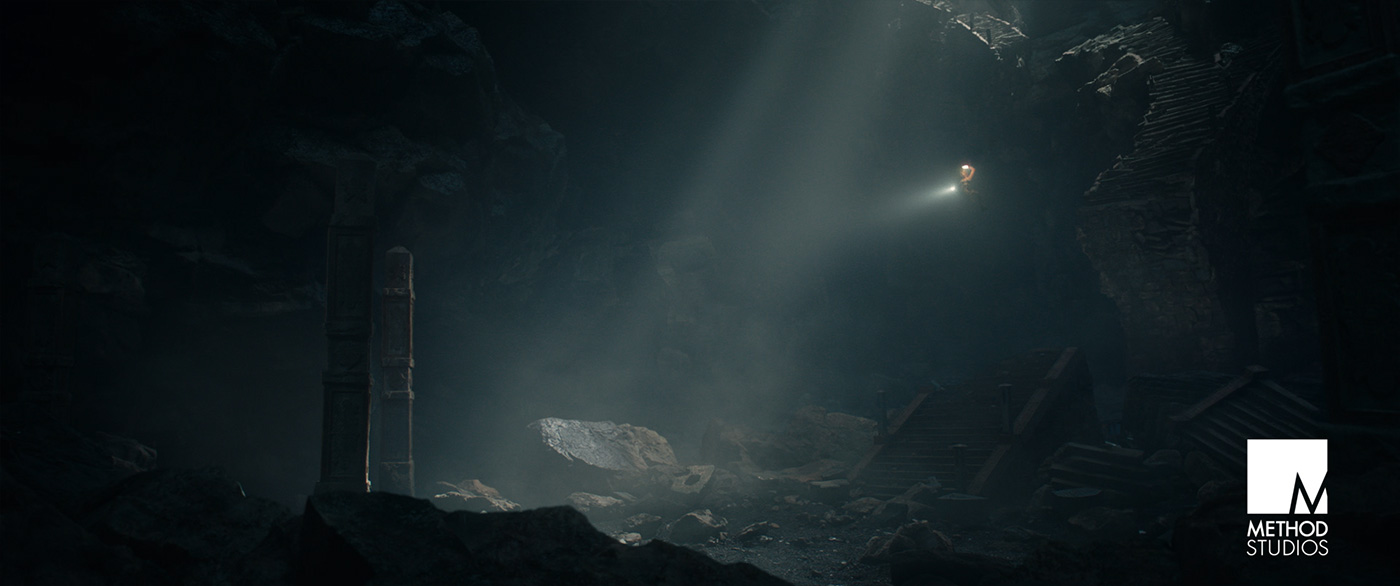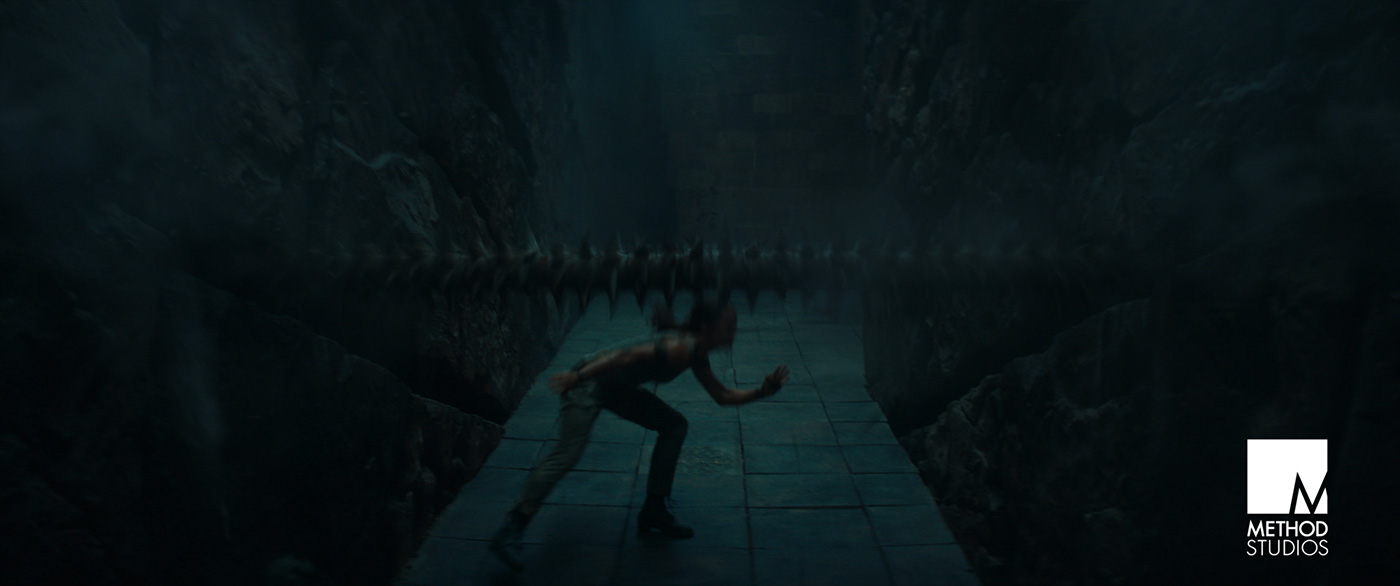At the beginning of the year, Glenn Melenhorst talked to us about his work on JUMANJI – WELCOME TO THE JUNGLE. He is back to show us his work on TOMB RAIDER.
NOTE: The work was made at Iloura that now is Method Studios.
How did you and Iloura get involved on this show?
We had worked with the VFX Supervisor Paul Linden before on JOHN WICK 2, and Scott Shapiro on DON’T BE AFRAID OF THE DARK.
How was the collaboration with director Roar Uthaug and VFX Supervisor Paul Linden?
As we weren’t the main VFX vendor for the film, we were not required on set. Our work with Paul on JW2 was very recent and I think his familiarity with our work and capabilities served as a good foundation for the collaboration. Ineke Majoor and I flew to London to meet with Paul, Scott and, more importantly, Roar to discuss the VFX requirements of the film which proved to be a useful undertaking.
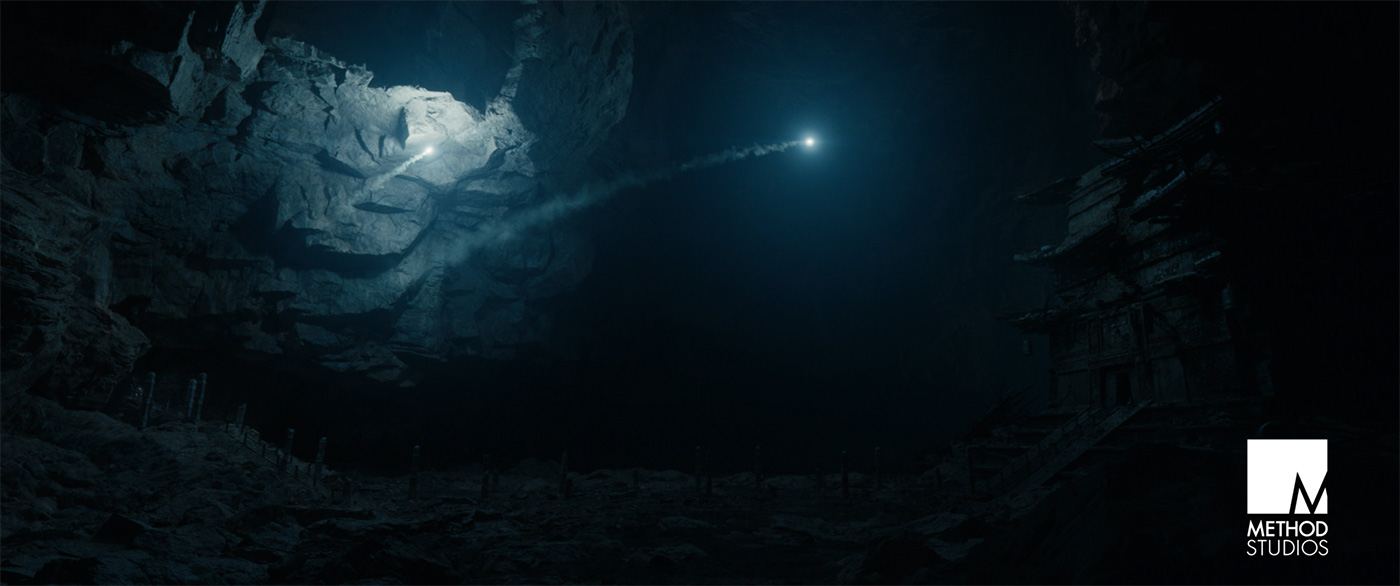
What was his approach and expectations about the visual effects?
We were given some loose concept art but significant creative freedom, so, together with RSP who we collaborated with, we were able to bring a lot of our own ideas to the sequences.
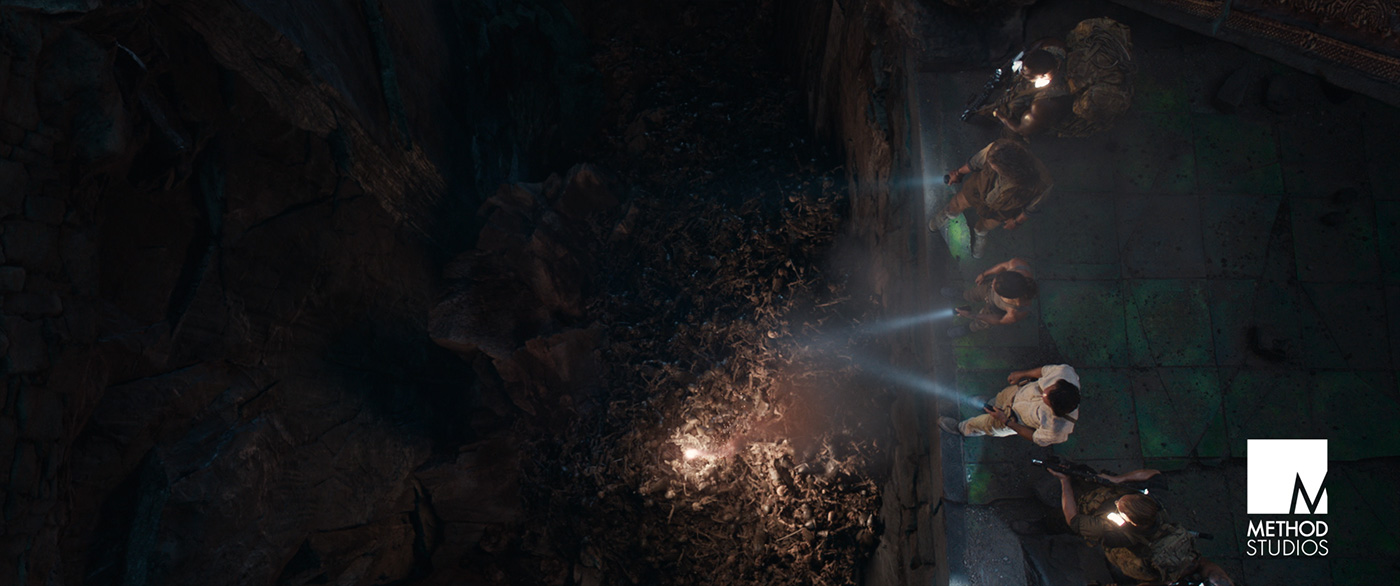
What are the sequences made by Method Studios?
We created a large number of digital sets including the tomb descent, the pagoda, the tomb corridors and the ladder crossing (with all the skeletons below). We also designed the withering FX and wide explosions of the pagoda (while its internal destruction was created by RSP), Himiko mummy, spikey log trap, floor spikes, and a whole lot of bluescreens and keys and production fixes.
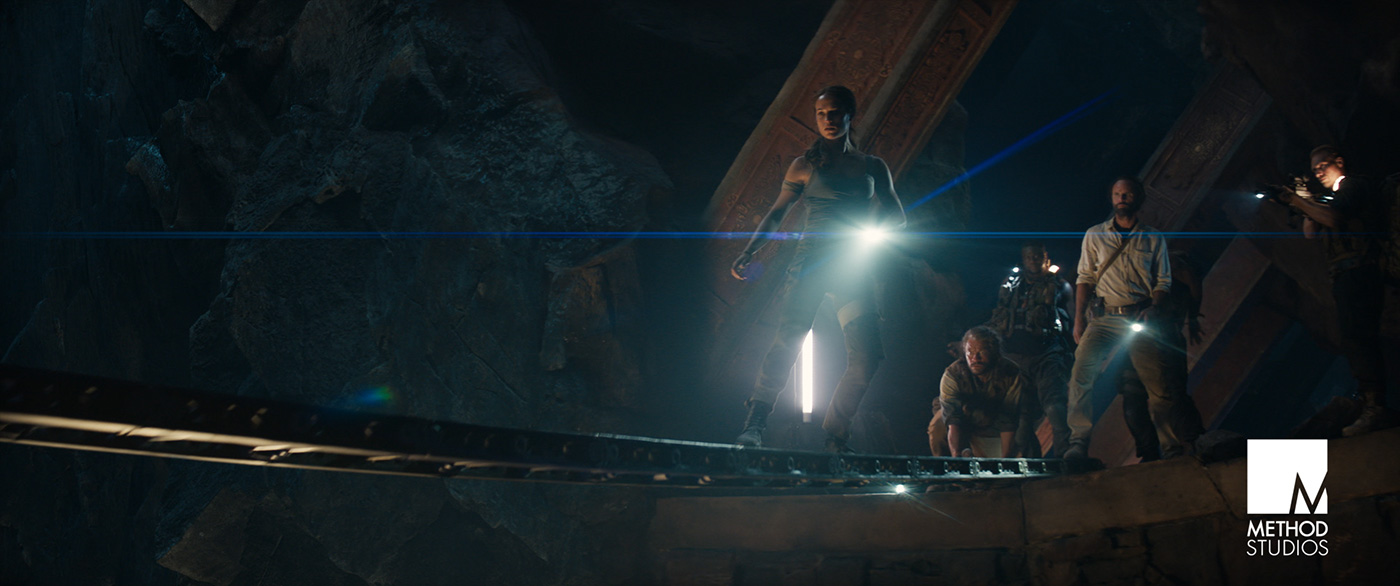
How did you work with the art department for the tomb?
Art department provided us with some concept work, but there was also art from RSP to work with and our own internal concept art. We did a lot of work on the pagoda to bring it a sense of scale and Japanese details.
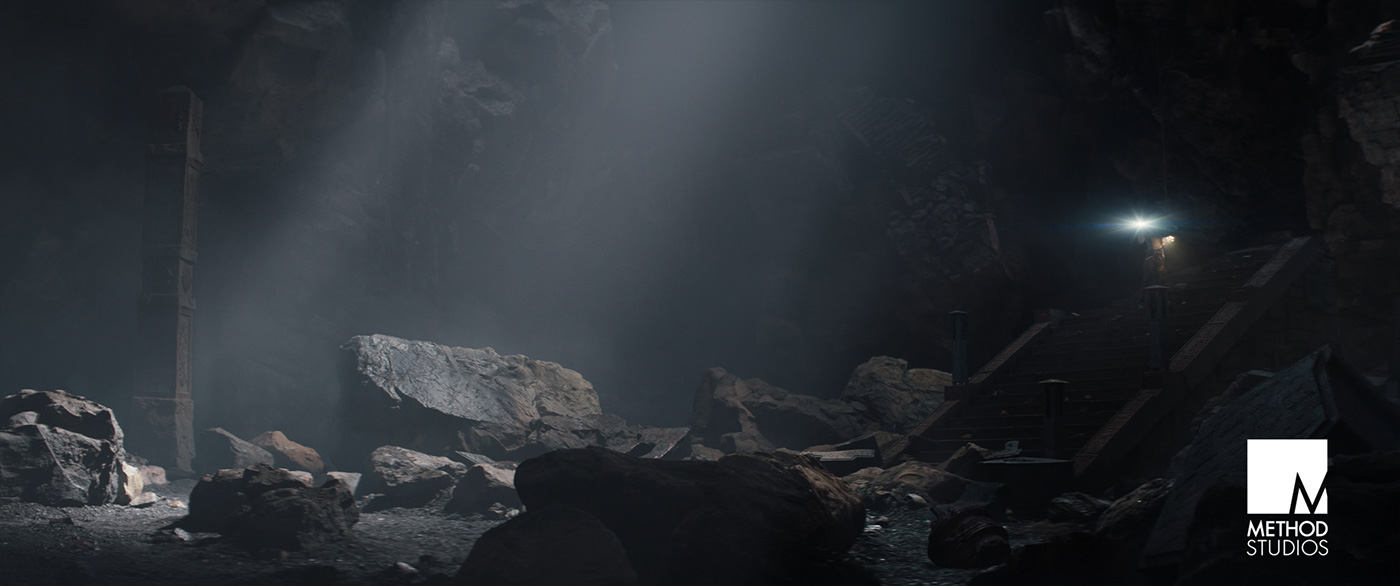
What was the real size of the sets?
For the pagoda sequence, even though the set was large (impressive really), the scale of the games usually work on a much grander scale than is achievable in a studio set. We took the plates, split and scaled them and laid them inside our vast CGI spaces in order to give a broader scope and amplify the grandeur.
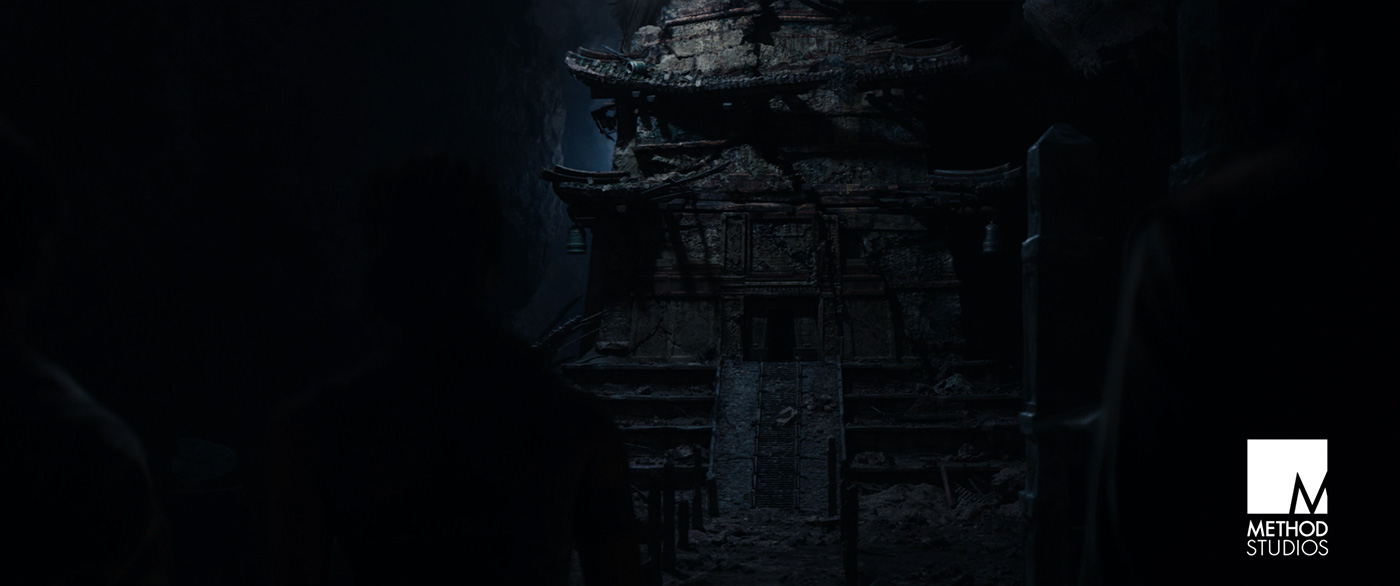
Can you explain in details about the design and the creation of the tomb?
Asset Lead Sam Jensen and Environment/DMP Lead Alex Popescu ran point on our set extensions and tomb design. We had a ton of available data to pull from in assembling the rock formations, including our own reference photography and an internal library of models, so we could quickly place pieces together like Lego bricks and show the client different iterations. Once the shape was approved, we go into heavy textures and details.
There isn’t much light inside the tomb. How does that affect your lighting?
You have to be really subtle with the lighting, and, most importantly, calibrate your equipment so that when we review our work, its light levels accurately represent the final pictures.
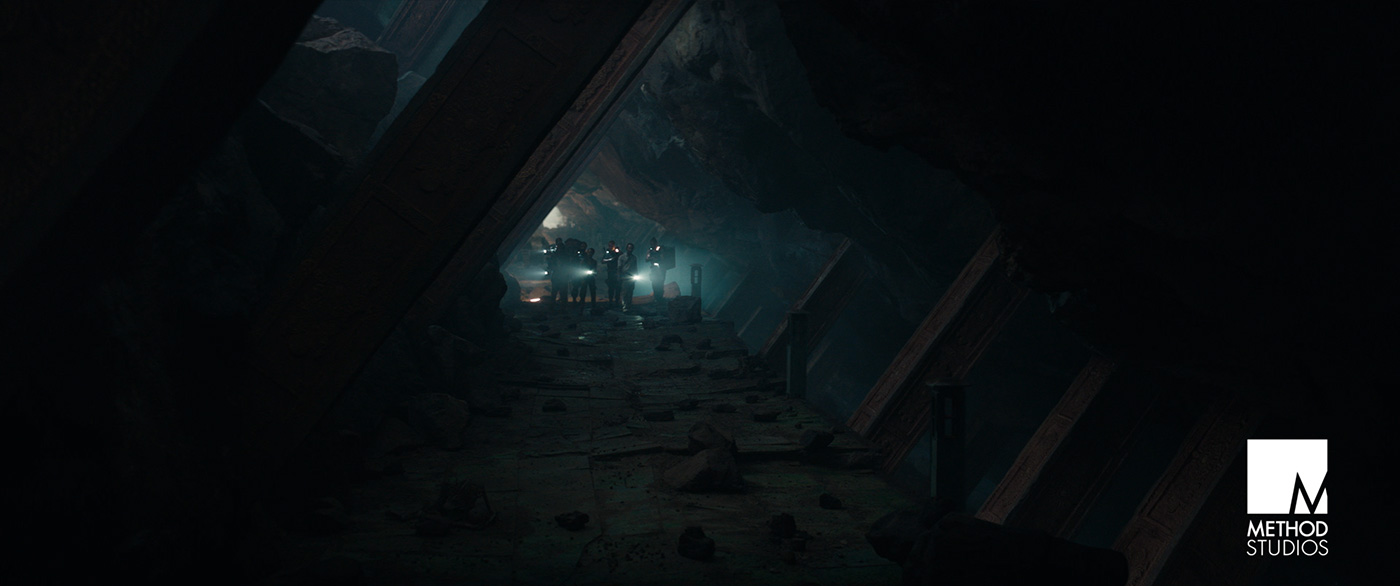
There are many deadly booby traps. How did you create them?
We created the rolling log trap and the spikes in the ground trap, and as much as I’d like to talk them up, they were pretty simple to make. The hardest part of the process was the dust / debris interaction with the actors who were on a clean partial set. Making the corridors seem dusty, and dirty was almost harder than the traps.
Which part of the tomb was the most complicated to created and why?
The pile of skeletons in the chasm below the ladder crossing was our most complicated set piece. Besides the research we did into armor from feudal Japan and sculpting the mutated bones for countless skeletons, we needed to simulate the pile and keep it ‘live’ for interactions and simulations of the flare hitting it and Vogel falling into it. The design of the walls in that sequence also took time. They needed to be sheer enough that someone of Lara’s skill couldn’t climb, yet hold enough craggy interest to be believable.
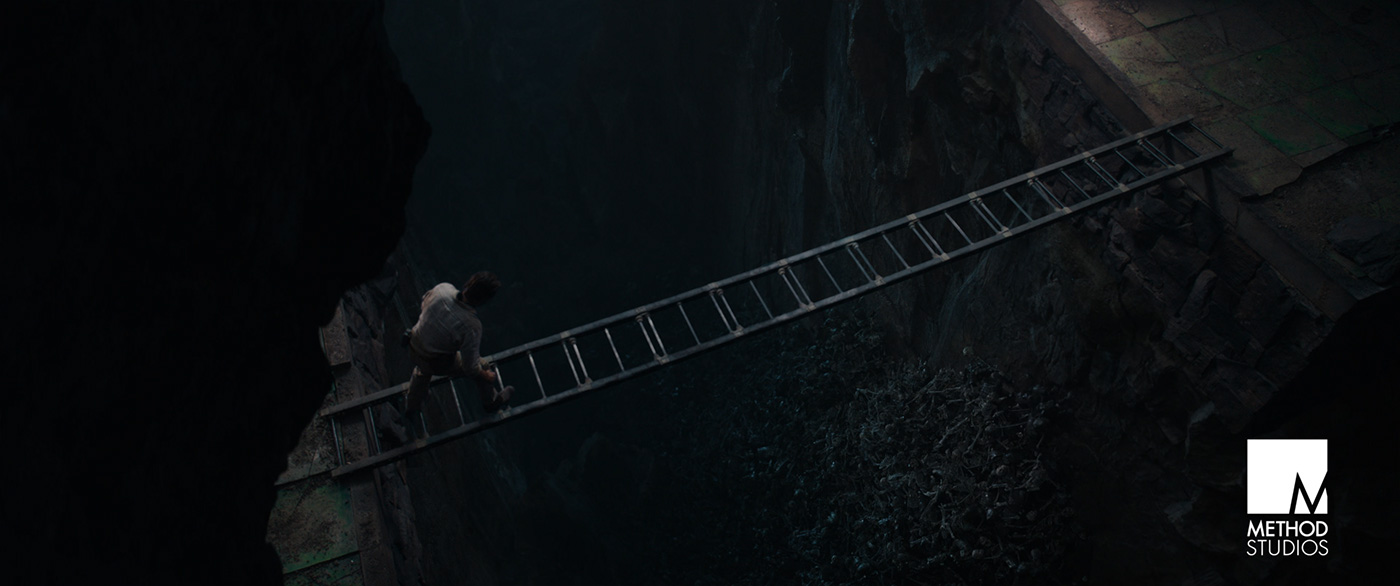
Aside from that, the withering effect we created was the most technically challenging. When you have actors trembling in high frequency under aggressive torch flares with stringy hair and beards, it’s no small feat to track veins and decaying flesh onto them. That was a real challenge.
How did you design and created the terrible disease brought by Himiko?
FX Lead Daniel Hourigan and Paul Buckley, along with Thijs Noij in comp, came up with the design. We did extensive lookdev and played with a number of approaches to create an iconic look that would still fit within the film’s PG-13 rating. Our early passes were pretty gory, but we pulled it back, ultimately landing on the withering effect.
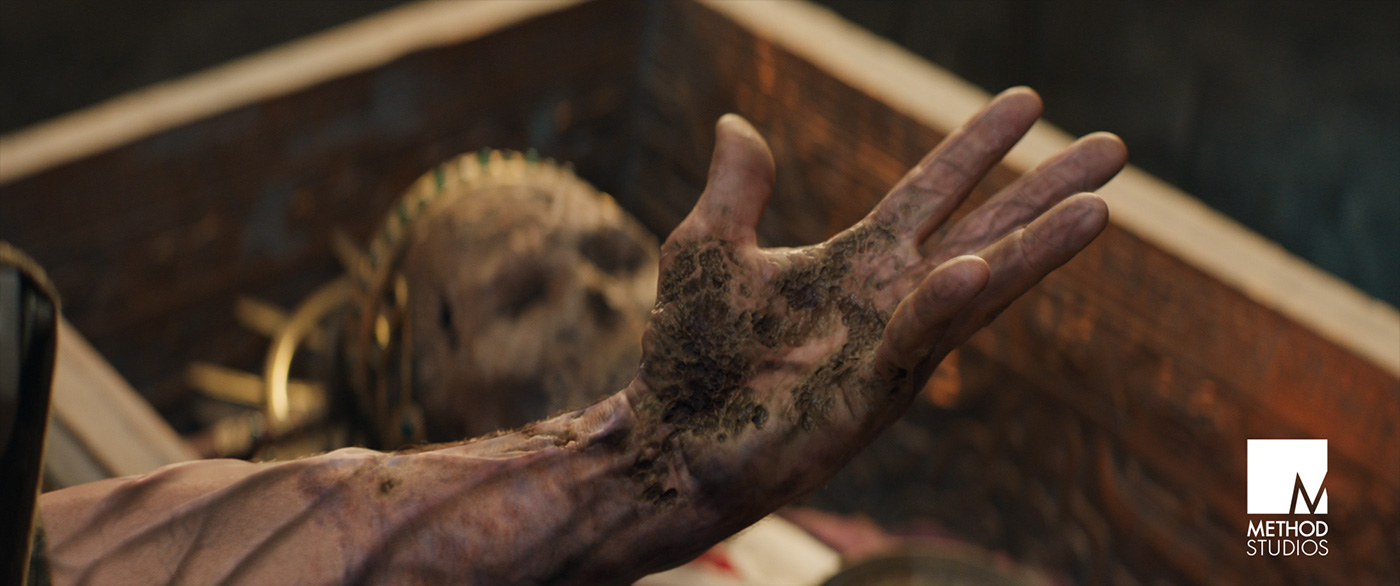
Can you tell us more about Vogel’s death?
Our original brief was that the withering effect was to be an echo of the effect first seen on Himiko when the tomb is opened. We worked on the idea of a rapid decay carried through veins, starting with a darkening vein pass, which spots decay here and there on the surface of the skin. Those spots spread and connect and deepen into charcoal-like depressions that sink, until presumably the flesh ashes away and all that is left is the skeleton. Vogel has Himiko’s finger crushed inside his mouth so the effect was aggressive, spreading much faster than the other characters so by the time he joins the skeleton pile he’s well under way. We iterated with many different looks and amounts of decay trying to achieve a gruesome result without pushing the effect too far into another ratings bracket.
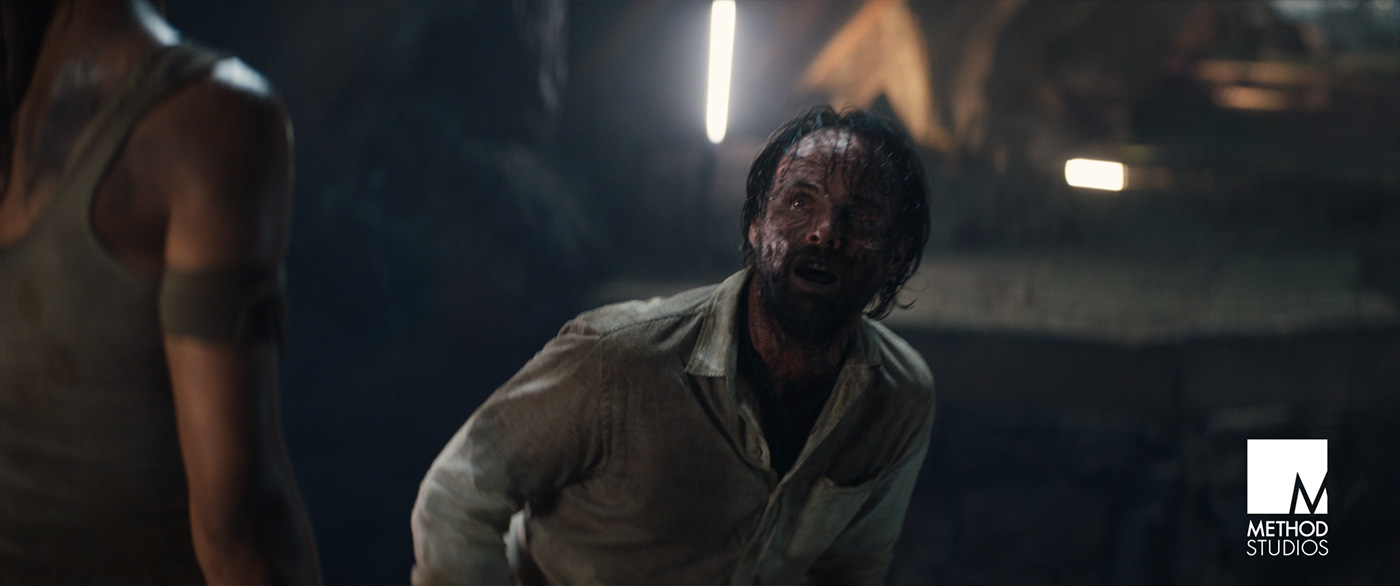
What was the main challenge on this show and how did you achieve it?
In terms of tools and techniques, we used our usual bag of tricks. Tracking the virus FX onto the actors required some scrutiny, but the challenge of the film was more conceptual than technical.
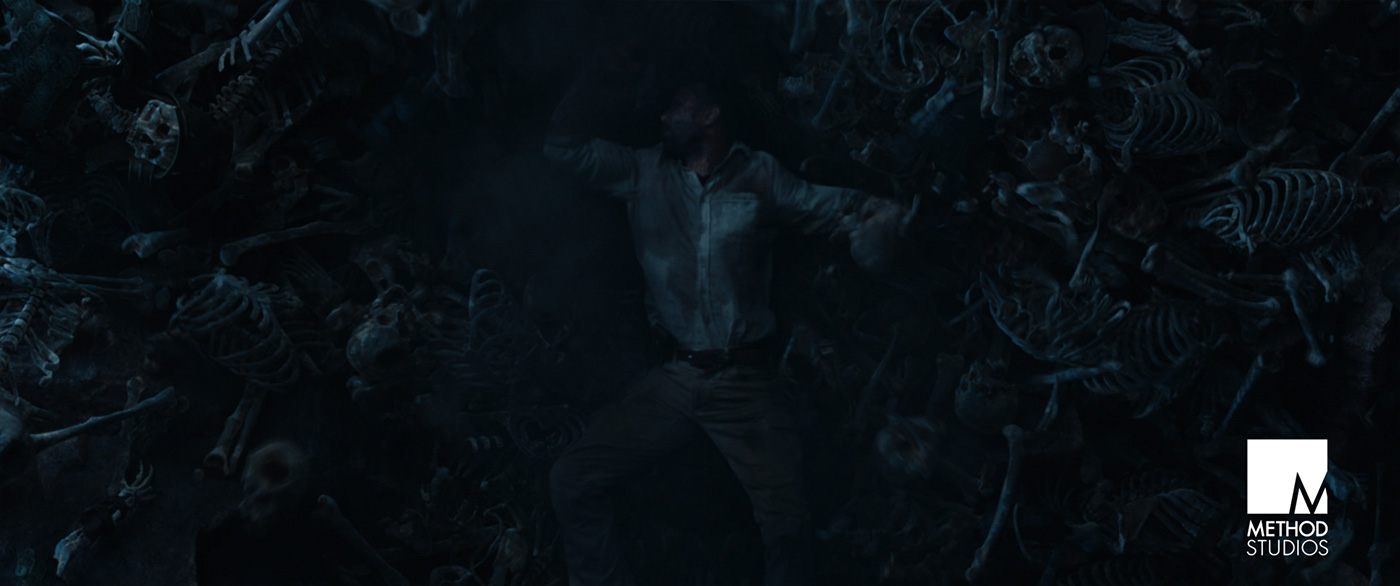
What is your favourite shot or sequence?
Definitely the ladder crossing. I think from a staging point of view, it was a pleasing sequence to be involved with.
What is your best memory on this show?
We were given a fair amount of creative license in terms of the set extension, which was really cool. Our artists developed how the interior of the cave was structured, the intricacy of the pagoda and the virus withering effect; we got to stretch creatively.
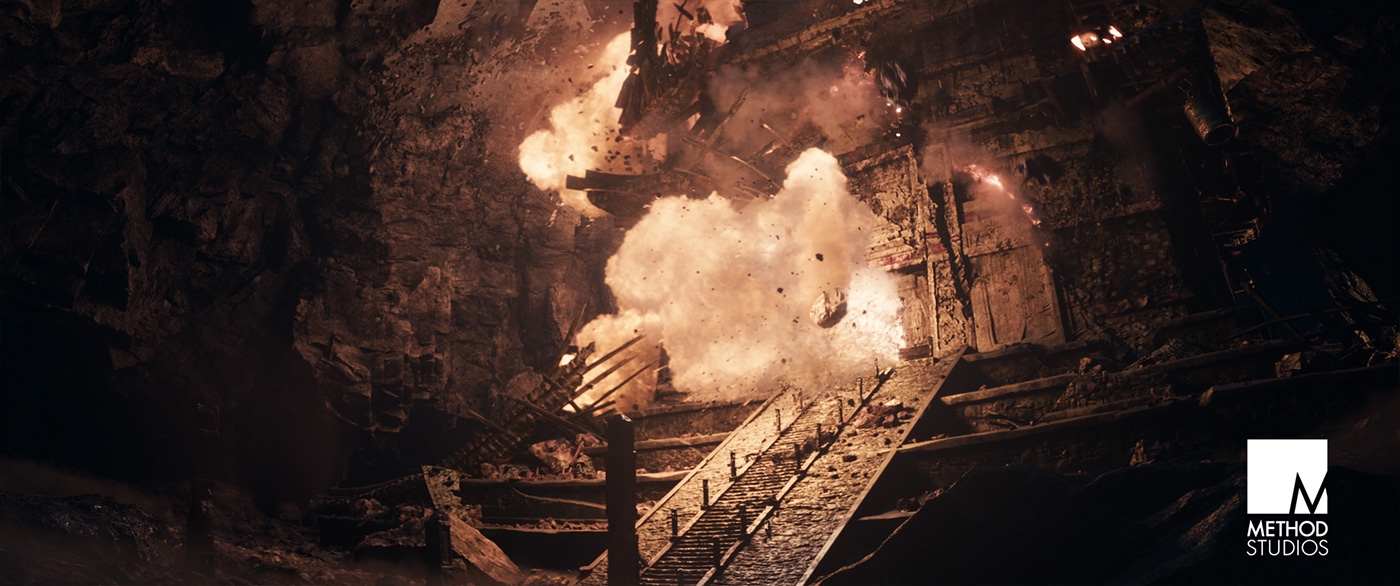
How long have you worked on this show?
The bulk of the work was completed over a four month period.
What’s the VFX shot count?
We completed 352 shots, about 12 minutes of screen time.
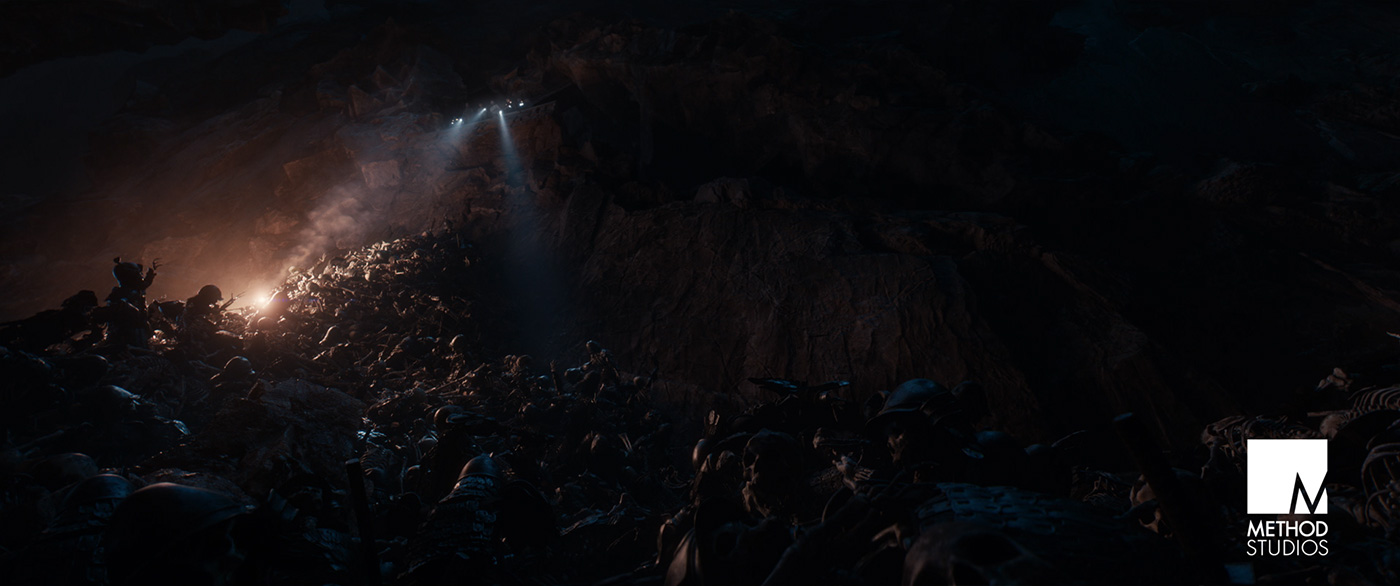
What was the size of your team?
I supervised the project jointly with Comp Lead Matt Omond. The team size was 85 artists.
What is your next project?
We are currently working on CHRISTOPHER ROBIN and AQUAMAN.
A big thanks for your time.
// WANT TO KNOW MORE?
Method Studios: Official website of Method Studios.
© Vincent Frei – The Art of VFX – 2018


